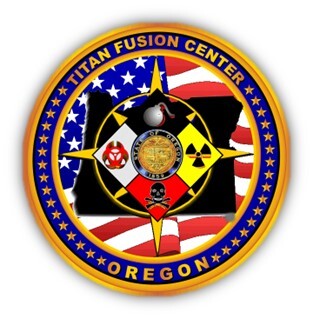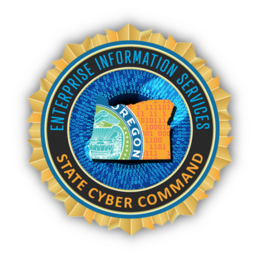|
Celebrating Emergency Communications: A Tribute to the Unseen Heros

April, designated by the Cybersecurity and Infrastructure Security Agency (CISA) as Emergency Communications Month, holds a special place in the hearts of those involved in public safety and emergency communications. As the Oregon Statewide Interoperability Coordinator (SWIC), I am privileged to serve an incredible community dedicated to protecting lives and property. This month, we celebrate the tireless commitment, dedication, and expertise of emergency telecommunicators, radio system professionals, broadcasters, cyber and IT specialists, and all those whose critical work often goes unnoticed but is essential to public safety and the well-being of field responders.
A highlight of this month is National Public Safety Telecommunicator Week. It is a week specifically dedicated to honoring those who serve as the first point of contact in times of crisis. These professionals, often referred to as the "voice in the dark", work tirelessly behind the scenes, maintaining their composure while navigating through the most stressful situations imaginable. They are the unsung heroes who provide a lifeline to those in need, guiding emergency services to where they are most needed and ensuring that help arrives as quickly as possible.
Emergency telecommunicators have a multifaceted and complex role, far beyond that of mere call operators or "office and administrative support personnel". They are highly trained professionals skilled in rapid response, critical thinking, and crisis management. They coordinate the response of police, fire, and EMS services, making split-second decisions that can mean the difference between life and death. Moreover, they play a pivotal role in keeping first responders safe by providing them with vital information, monitoring their status, and ensuring they have backup when needed. They are intelligence gatherers, analysts, remote incident commanders, and guardians on overwatch. I'm proud that in 2021, the Oregon Legislature saw fit to pass SB425, officially recognizing Oregon's telecommunicators as first responders. This month, let us acknowledge their unwavering commitment and express our deepest gratitude for their service as we celebrate this amazing group of individuals during National Public Safety Telecommunicators Week!
In addition to celebrating our telecommunicators, Emergency Communications Month presents an excellent opportunity to take a moment and reflect on our community as a whole. It isn't an understatement to say that we're on the brink of revolutionary changes in emergency communications. We're poised to embrace new technologies and innovations that will enhance our ability to respond to emergencies in ways never thought possible. As a statewide community, we've initiated a project to begin the rollout of Next-Generation 9-1-1. Although we're just starting down a long road, our partners in California and Washington have paved the way and with their support, we now know the path we need to walk.
We are also beginning to learn how to access new mediums—like satellite radio and next-generation TV—to enhance our ability to alert the public to danger. We’re also seeing how artificial intelligence can help us author better messages in any number of different languages, increasing our ability to provide critical information during times of disaster. Every year, we continue to make great strides in improving the accessibility of our alerts and warning systems by intentionally asking the question: "Who isn't able to get our messages and why?"
We are also exploring ways to utilize new technologies like low-earth-orbit satellites to enhance land mobile radio and bring broadband to historically unconnected areas. These new platforms offer incredible opportunities to revolutionize how we think about, train for, and deploy incident communications. We're exploring how edge computing and 5G networks can enhance the incident response model. Unmanned systems are becoming integral to the public safety mission, even as part of first-out missions in some areas.
Yet, despite all of these enhancements and innovations, at the heart of our efforts will always be the people who bring their knowledge, skills, compassion, and courage to the job every day. As we move forward, let us continue to support and uplift one another, recognizing that we are stronger and more capable than we ever could be apart.
As we celebrate Emergency Communications Month and National Public Safety Telecommunicators Week, I hope we will remember the importance of community and collaboration. The ethos of Statewide Interoperability is that "Interoperability begins with relationships." Our emergency communications community is a testament to what can be achieved when we work collaboratively and build relationships. Through our shared commitment to excellence, our collective resilience, and our dedication to serving others, we can meet the challenges of today and tomorrow. I encourage you to reach out, foster relationships, and take opportunities to connect. You are not alone!
Happy Emergency Communications Month!
William Chapman
Oregon Statewide Interoperability Coordinator
|
|
|
Michael Rowden Strengthening Statewide Partnerships as the FBI's Lead Electronics Technician in Oregon

In June 2023, I transferred to the Portland Division of the FBI as the Lead Electronics Technician covering the state of Oregon. Our team of six Electronics Technicians (ETs) handles all of the security and access control systems, our data networks, and, most prominently, the Integrated Wireless Network for the U.S. Department of Justice. With regard to the Land Mobile Radio system, our team handles everything from climbing radio towers to programming and issuing radio subscriber devices and deploying with tactical teams.
Immediately after my transfer, I began reaching out to various partners across the state to learn the composition of radio communications throughout Oregon. I was pleasantly surprised to learn that the Statewide Interoperability Coordinator in Oregon works closely with those in North Carolina, where I spent the past 11 years of my career.
Despite the immense talent and skillset in the FBI, we can only succeed in law enforcement with our state and local partners. Our relationships in the law enforcement community are the most valuable tool in our toolbox. This success is a mutual effort, as we in the FBI want to make our knowledge, expertise, and resources available to our partners.
I’ve heard that we tend to be a “consumer rather than a partner.” As the Lead Electronics Technician, I sincerely hope to change that perception. My goal is to meet with as many state and local partners as possible and facilitate whatever assistance the FBI can provide; if that falls outside my expertise, I will endeavor to find someone in the FBI who can assist.
I can be reached by email at mrowden@fbi.gov. My supervisor, Pat Hubers, may be contacted at phubers@fbi.gov, or you may call our office at (503) 224-4181.
|
|
|
Oregon Broadband Office Poised to Provide Internet Access to All Oregonians

Highspeed internet gives us access to a world’s worth of information at our fingertips. Reliable, high-speed internet ensures that schools, hospitals, and businesses can communicate with emergency and public safety personnel in times of crisis. The internet lets us buy and sell goods globally, work and learn from anywhere, and compete everywhere. With a strong internet connection, patients can communicate with their doctors from their homes at any time.
Though the internet is our essential connection to the world, many Oregonians lack reliable, affordable access. According to the Federal Communications Commission (FCC), approximately 126,000 Oregonians don’t have internet in their homes.
In 2018, the Oregon Broadband Office was created within Business Oregon, Oregon’s economic development agency. The office is charged with promoting, supporting, and facilitating the expansion of broadband infrastructure to every household in Oregon. According to Oregon Revised Statutes (ORS) 285A.166, the office is intended to “advocate for the adoption of public policies that close the continuing digital divide by removing barriers to and supporting broadband infrastructure deployment”.
Using federal funds from the Bipartisan Infrastructure Law, the Broadband Office is working hard to help connect Oregonians to the internet they need by providing grant programs for broadband deployment and digital equity. In 2023, the National Telecommunications and Information Administration (NTIA) announced that Oregon was eligible to receive approximately $688.9 million to improve statewide access to affordable, reliable, high-speed internet. In 2023, the office also secured $157 million from the U.S. Treasury Department to help develop broadband infrastructure capable of serving locations lacking high-speed internet. The office is charged with administering nearly $1 billion in state and federal grant funds.
The office is releasing these grant funds in three program phases. Phase one began in January 2024 with the launch of the office’s Broadband Technical Assistance Program (BTAP) to help communities and internet service providers (ISPs) plan and prepare for future broadband deployment projects. The office looks forward to launching phase two in 2024 and 2025 with the Broadband Deployment Program (BDP) and Broadband Equity, Access, and Deployment (BEAD) Program to fund new broadband infrastructure in every Oregon community without high-speed, affordable internet. In late 2024, the office anticipates launching phase three, focused on digital equity, to provide Oregonians with the computing devices, training, and support needed to use the internet safely.
Efforts to plan and develop these grant programs have been extensive – and the office hasn’t done it alone. “Public input is key to developing a broadband plan that reflects the broadband needs of all Oregonians,” said Nick Batz, Director of the Oregon Broadband Office. In 2023, the office embarked on a robust statewide engagement effort to inform its programs by gaining wide-ranging and in-depth feedback about broadband needs in Oregon communities. The office developed a five-year action plan supported by responses from public attendees at 12 community meetings across Oregon. Office outreach staff also engaged with nearly 200 public and private partners to understand their individual needs and objectives. The office has used the feedback received from this outreach to develop the planning components for Oregon’s Five-Year Action Plan, BEAD Initial Proposal (Volume 1 and Volume 2), and Digital Equity Plan.
Want to learn more about the work the office is doing and get involved? You can follow the office’s progress by visiting our website, signing up for email notifications, and following us on social media.
|
|
|
The TITAN Fusion Center Enhancing Homeland Security in Oregon

The Oregon Terrorism Information Threat Assessment Network (TITAN) Fusion Center (OTFC), established in 2007, is Oregon’s only node within The National Network of Fusion Centers. By sharing information that provides unique state and local perspectives on threats within our jurisdiction, our analysts bring critical context and value to Homeland Security and Law Enforcement communities. Unlike any federal or local organization, OTFC acts as the primary conduit between frontline personnel, state and local leadership, and the rest of the Homeland Security Enterprise.
OTFC provides the following primary services.
Information Sharing. The fusion center creates timely and relevant intelligence bulletins and acts as a conduit for passthrough products from partner agencies that are shared with vetted partners nationwide. Topics include cybersecurity, crime trends, most wanted, and public health and safety.
Case Support. Analysts analyze criminal activity and provide intelligence products to local, state, and federal law enforcement by supporting ongoing criminal investigations and identifying emerging crime patterns and trends. Key activities include:
- Creating intelligence reports and visual representations of criminal activity
- Identifying investigative leads and needs
- Building detailed telephone call records and social media analysis
- Financial case assistance
- Post-seizure analysis
The Fusion Liaison Officer (FLO) and Community Liaison Officer (CLO) program supports law enforcement and decision-makers in reducing organized crime and preventing terrorism within Oregon. These programs establish predefined channels and provide sector-specific training to elicit effective reporting of criminal and terrorist activity at tactical, operational, and strategic levels. Eligible members for the program include law enforcement and public safety officials, the National Guard, and public and private sector representatives from government, industry, houses of worship, and more.
Special Event Threat Assessments. These reports describe the current threat environment about mass gathering events per analytical research and communication with local, state, and federal law enforcement and intelligence agencies.
Risk and Vulnerability Assessments. These provide a comprehensive review of physical and cybersecurity footprints. An RVA helps identify threats to an organization’s physical assets, allowing leadership to prioritize mitigation efforts and incident response.
Human Trafficking Analysis. The fusion center, in partnership with the Oregon Department of Justice’s Crime Victim & Survivor Services Division (CVSSD) Trafficking Response & Intervention Program (TRIP), provides a full-time Human Trafficking Criminal Intelligence Analyst who provides support for trusted partners by:
- Facilitating Law Enforcement training on Human Trafficking
- Distributing intelligence bulletins on related topics
- Providing analytical case support on Human Trafficking cases
- Working closely with Human Trafficking Task Forces across the state
- Connecting state, federal, and international government agencies, law enforcement officials, survivor advocates, communities of faith, lived-experience experts, and non-profits for coordination and collaboration.
The Critical Infrastructure and Key Resources Program creates operational plans, procedures, and other resources to improve the capability of state, local, tribal, and private sector owners and operators to protect assets within the state effectively. Key activities include training, analysis/planning, outreach, assessments, and emergency response.
Scott Burwash
Critical Infrastructure & Key Resource Program Coordinator
|
|
|
Ensuring the Well-Being of the Unseen First Responders

Telecommunicator wellness is a hot topic and that’s for a valid reason. As part of the first responder family, we recognize the toll that the job takes on all of us while being mindful of the unique challenges that set us apart. We are often the first contact in emergencies, so we need to paint a picture for our responders without seeing the scene, as responder safety is of the utmost importance.
After signing into our multiple computers and systems, we are ready to start. With no heads up, the phone rings; we have no idea what is happening before we pick up the phone line. We launch into gathering information from the caller, asking follow-up questions, determining whether it is a law enforcement, fire, or EMS call (sometimes all of the above), and then translating the crude details into another language so our counterparts understand what is happening and needed as a response.
It can be challenging to not physically respond after hearing the call information. We are not collecting our thoughts while responding to the emergency location. We often do not work through the chaotic and stressful information we just received before taking the next call. Also, not seeing things firsthand (a blessing and a curse), we are often left to imagine what this looks like in real life. Coupling that with often not knowing the resolution of the call, we’re adding complication to this already taxing and stressful work. In a profession where only approximately 3% of the population can do this work, we need to prioritize Telecommunicator Wellness—keeping our current people healthy and creating an environment that allows us to recruit new team members.
In 2022, Telecommunicator Wellness was brought to the Oregon APCO-NENA membership by then-President Keith Endacott, who recognized the need for this kind of work in Oregon. Our local committee was modeled after the APCO International Health and Wellness Committee. The committee comprises members from across the state—including small, medium, and large-sized centers—with members who are in Peer Support, Training, and Education. The committee has been working together for almost two years, focusing mainly on getting the wellness initiative out at our APCO-NENA quarterly meetings by incorporating therapy animals during troubling yet necessary training, organizing nature walks after class, and practicing chair yoga with mindfulness breathing. The committee is highly motivated and super-excited to continue growing our resources, wellness activities, and ways to interact with our membership.
Erica Stolhand, APCO NENA Vice President
APCO-NENA Wellness Committee
|
|
|
Oregon's Resources and Framework to Combat the Increasing Threat of Cybersecurity

The risk is real, cyber-attacks are increasing, and no organization is immune from the threat. Cyber disruptions significantly impact organizational business, resulting in high financial costs and risk to reputation. Given the range in size, scope, and resources of organizations, being prepared can look very different from one organization to another. The protection of data is paramount. Enterprise Information Services - Cyber Security Services (CSS) has resources that can be leveraged to help: https://security.oregon.gov. CSS is responsible for state cyber security governance, security monitoring of the state network, cyber incident response, security training and architecture, and disseminating security best practices. CSS sets the statewide direction for cybersecurity and follows guidance from the National Institute of Standards and Technology (NIST) and the Center for Internet Security (CIS), as well as other cybersecurity organizations such as the Cloud Security Alliance (CSA), where appropriate.
In addition, Oregon has developed a voluntary framework to help organizations address cyber threats, Oregon Cyber Disruption Response and Recovery - Voluntary Resource Guide for Local Government (OCDR). The OCDR identifies resources and available services to enable a coordinated approach to respond during a cyber incident or disruption. In support of the OCDR, a Cyber Disruption Workgroup meeting is held quarterly. This community-driven workgroup shares information and challenges, builds relationships and networks, and learns from each other. The workgroup brings in subject matter experts to speak on topics of interest to the group. If you want to participate in this workgroup, please contact ESO.INFO@das.oregon.gov with a CDP Member Request in the subject line.
|
|
|
Overcoming Obstacles to Sustain Rural Public Safety Answering Points

As a vital component of our communities, Public Safety Answering Points (PSAPs) stand as the first line of response in times of crisis, ensuring swift and effective assistance to those in need. However, the challenges facing our PSAPs are multifaceted and demanding, requiring innovative solutions and sustained support to navigate the complexities of modern emergency communications.
At the forefront of these challenges lies the rapid advancement of fiber technology to "transport" communication data and to offer "mid-mile" or "last mile" connectivity for the microwave networks typically used in public safety communications. While fiber-optic networks promise unparalleled speed and reliability, their implementation in rural areas remains daunting. Limited resources and vast geographical distances pose significant barriers to expanding fiber-optic networks, leaving many rural PSAPs struggling to keep pace with their urban counterparts. These disproportionately high costs to extend networks to where they are needed are out of reach for many smaller, rural counties that do not have the financial tax base to make these improvements a reality.
Compounding this issue are the ever-evolving communications needs of our communities. With the proliferation of mobile devices and digital platforms, the demand for seamless and accessible emergency services has never been greater. Yet, rural PSAPs often need to grapple with outdated equipment, insufficient bandwidth, and challenging topology that hinders traditional radio systems from effectively communicating with first responders.
Moreover, the financial burden on rural PSAPs is steadily increasing, driven by rising costs and static revenue streams. Many PSAPs cannot invest in essential upgrades and personnel training as operational expenses escalate. With county-wide public safety infrastructure upgrades regularly requiring tens of millions of dollars, counties with populations only in the tens of thousands will never be able to invest in what is needed to modernize. You can't get blood from a stone or something like that. This precarious financial situation not only jeopardizes the quality of emergency services but also undermines the long-term sustainability of rural communities.
Meanwhile, the needs of our growing communities are outpacing the capacity of our PSAPs to respond. Rapid population growth and urban sprawl into rural areas have placed unprecedented strain on emergency services, leading to a surge in calls for service year over year. In this environment of heightened demand and limited resources, rural PSAPs struggle to maintain adequate service levels while balancing competing priorities.
Addressing these challenges requires a concerted effort from all stakeholders, including government agencies, telecommunications providers, and community leaders. By bridging the digital divide, we can empower rural PSAPs to leverage the full potential of fiber technology and enhance their capacity to respond to emergencies effectively. The most important question remains: How do small, rural cities and counties accomplish this? These areas often feel isolated and left out from the more extensive conversations at the state level when, in fact, it is these areas that need to be at the center of those conversations.
Additionally, we must explore innovative funding mechanisms to alleviate the financial burden on rural PSAPs and ensure their long-term viability. This may involve implementing user fees, securing grants, or leveraging public-private partnerships to generate sustainable revenue streams and support essential upgrades and training initiatives. Agencies looking for funding to make modernization possible through the traditional means, usually in the way of new taxes, quickly find that the public's appetite for these measures is at an all-time low. In addition, small fire districts, rural law enforcement agencies, and ambulance services already operate on thin budgets, so extending costs to these organizations isn't an option.
Rural PSAPs' challenges are complex and multifaceted, requiring a comprehensive and collaborative approach. By investing in advanced technologies, securing adequate funding, and fostering collaboration, we can empower rural PSAPs to meet the evolving needs of our communities and ensure the timely and efficient delivery of emergency services. We need the help of our advocates at the state level to champion a "level the playing field" approach to financial and resource allocation. After all, the expectations of PSAPS to perform remain the same, no matter where they are located on the map.
John Spence
Tillamook County Emergency Communications District
|
|
|
Calendar of Events

April
2nd to 5th - All-Hazards Com-L Course Salem, OR
9th - WORJIC In-Person Meeting 10:00 AM to 3:00 PM Mid-Columbia Fire & Rescue, The Dalles, OR
22nd to 26th - ODEM Oregon PREPARED Sunriver, OR
May
6th to 9th - APCO Western Regional Conference Boise, ID
14th - SIEC Quarterly Meeting 1:30 PM to 3:30 PM
30th - Partnership Committee Meeting 1:30 PM to 2:30 PM
June
19th - Juneteenth (State Holiday)
25th to 27th - FirstNet Authority 5x5: The Public Safety Innovation Summit
28th to July 3rd - NENA National Conference, Orlando, FL
|
|
|
|
|
|